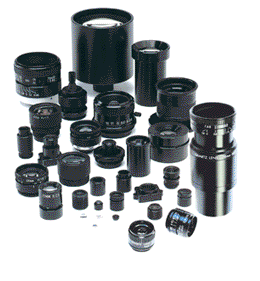High resolution lenses for machine vision — standard and custom lens design
The Importance Of Proper Microscope Mounting Mechanisms
High Resolution Lenses for machine vision, instrumentation, inspection and vibration-sensitive applications. Standard and custom hi-res lens assemblies.

Microscope Mounting Mechanisms
Observing a specimen under a microscope means you will need an object on which to mount the specimen for viewing. Most microscopes are equipped with a mounting medium that is used as a platform for a way to stabilize the specimen while researchers and scientists view it. The importance of a mounting mechanism cannot be discounted but of equal importance to the process are the optical characteristics of the mechanism. Looking at the refractive index (RI) of the mounting medium is a way to ascertain that the image will not be impacted by a poor RI but can instead be enhanced because of the RI.
What is RI and what is its impact on a specimen? Virtually all specimens have inherent refractive index qualities. Measurements of specimens include the difference between the “refractive index of the specimen and its mounting medium” as this can influence the visual appearance of the specimen through the microscope’s lens.
If there is a large discrepancy between the refractive index it will result in a strong refraction of light where the specimen and the mounting medium collide. This could lead to portions of the specimen appearing darker or lighter than they truly are. If for example, a specimen is “dry mounted” by using the air, rather than a mounting medium such as a slide, there could be dark fringes on the specimen where it is touched by the air. Air bubbles and free floating pollen are two examples of items that could be “dry mounted.” Even though the air and the water are transparent, the air bubbles appear more visible because of the dark rings that would surround it, a factor of the RI. Water and pollen are examples of “large difference RI.”
An example of a small difference RI would be in a specimen used on a mounting medium that could lead to a reduction in the scattering of light which could make the specimen’s natural colors appear more pronounced. It could also lead to distortion and the specimen appearing brighter and more transparent and this could lead to incorrect assumptions on the specimen’s activities or properties being drawn.
A condenser diaphragm can be fitted to a microscopes’ lens as a way to control the depth of field but the image contrast itself. The condenser diaphragm can be opened and closed to increase or decrease the contrast of the item to its background.
Understanding how properties work under both large and small difference RI can open new avenues of discovery for researchers and scientists.
Universe Optics is a lens designer and manufacturer of optical lenses for industrial, medical, high tech and electronic applications.